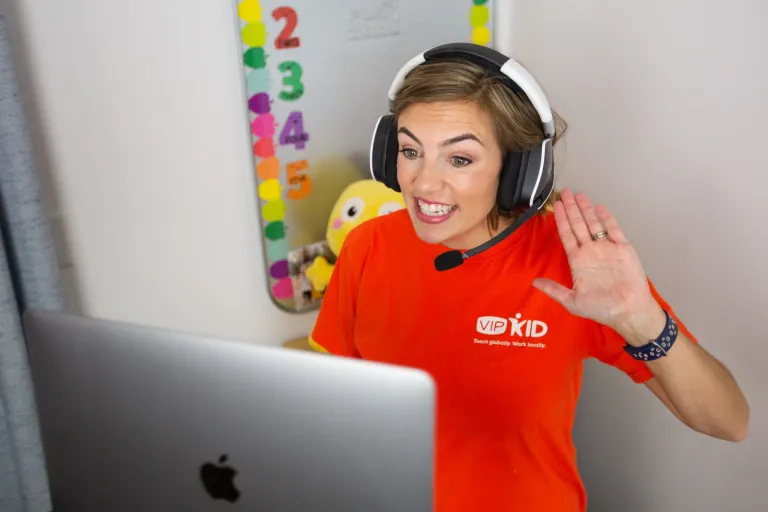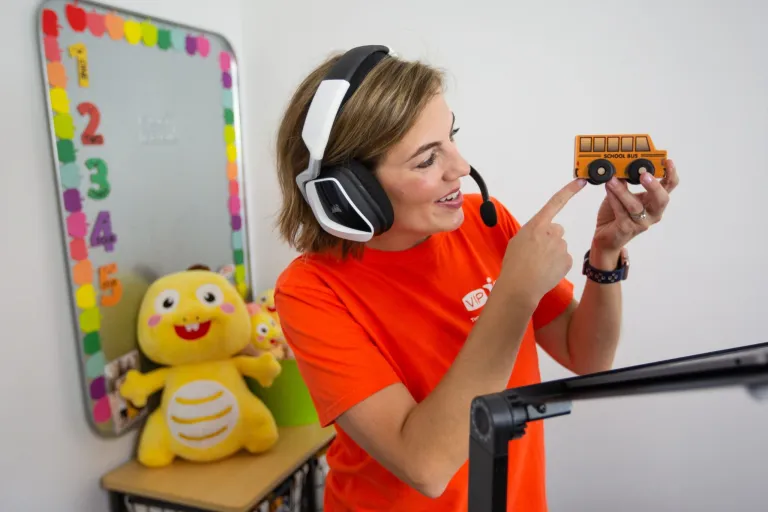Teach English Online More Effectively Using TPR Strategies
This blog post is sponsored by VIPKid.
While these three letters—TPR—might sound very mysterious, you have probably found yourself using this instructional strategy at some point in your life without even realizing it. That’s because TPR, total physical response, is actually a very simple and intuitive way to support language learners and communicate through language barriers. In this article, we’ll break down how TPR works and how to use it strategically in your lessons to achieve lasting results with young language learners.
TPR is a teaching method based on the coordination of physical movement and language. While using TPR, teachers give instructions to students in the target language using corresponding body movements, and students respond. The “R” in TPR is the key, because in order to be effective, students and teachers should be using it together. Students should “respond” by repeating the teacher’s movements while simultaneously verbalizing the newly learned vocabulary. This process enhances learning and helps encode the new information by linking it to previously understood concepts.
There are two types of TPR most commonly used in online language learning:
Instructional TPR: English language learners often need visual support in order to understand the teacher’s instructions, such as circling an answer or prompting a response to a question. Teachers who use instructional TPR are providing support necessary for student success. At VIPKid, teachers often employ instructional TPR by turning their head and putting their hand to their ear in the universal “I’m listening” signal, whenever it’s the students turn to speak rather than asking them to respond using additional, and possibly unfamiliar, language. This makes classroom interaction much more clear-cut, especially for early language learners.

VIPKid Teacher Hillary using instructional TPR in class.
Educational TPR: Mostly used for new vocabulary, educational TPR can be implemented to help students grasp new concepts. For example, if you were teaching the word throw, you would perform the action while saying the word, and get the student to perform the same action and say the word with you.

VIPKid Teacher Hillary using educational TPR in class.
Why Is TPR Important for Language Acquisition?
TPR is based on the natural, innate way that children learn to speak from birth. When parents teach babies their first words like mama or dada, they physically point to the person they’re naming while saying the word to build the association. That physical word association is naturally present in immersive language acquisition, especially for learning a first language. Teachers who use TPR to teach second languages online are implementing a fast-tracked version of the same concept.
Why Do We Use Educational TPR?
There are four reasons we utilize TPR strategies in English language lessons at VIPKid:
- To establish meaning: When introducing a new word, the action serves as the definition.
- As a comprehension check: If the student performs an action with the word unprompted, you know they have made a connection between the word and the meaning.
- As a prompt: If the student forgets a new word, teachers demonstrate the action for that word. Ideally, this will trigger their memory and allow them to produce the word. As a bonus, this also cuts down on teacher talking time.
- To make class more fun and engaging: The more the student is moving, the more engaged they will be in the lesson.
TPR may not come naturally to some teachers who, as adults, have learned to speak and communicate without using physical movement. But in the online classroom, the more dramatic and pronounced a teacher’s movements, the more memorable the experience for the student.
Keeping students’ attention during online instruction can be a challenge! Using TPR can make teaching English online easier, more fun, and more engaging for everyone. For more helpful tips for teaching online from the largest community of online teachers in the world, check out the VIPKid blog.

About the author
Kristin Fawaz
Kristin is a career educator with 25 years of experience in public education and the edtech space. Kristin dedicated her career to improving outcomes for all learners through access to engaging and differentiated instruction and to growing professional learning communities. As community program manager for VIPKid, Kristin works to empower the VIPKid teacher community through programs and opportunities for online educators to connect and share best practices.